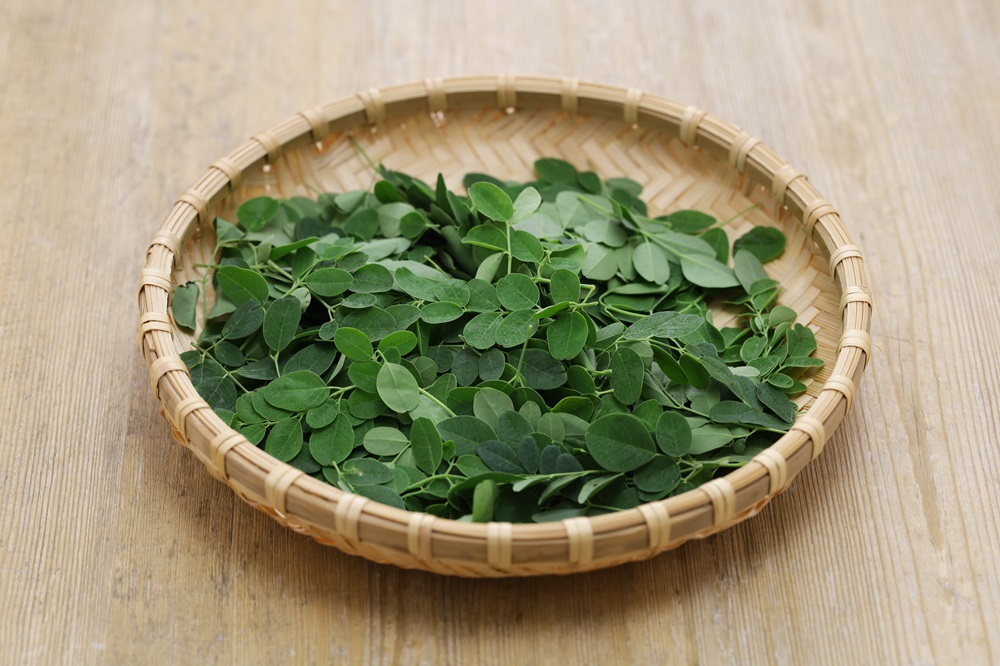Moringa – Effects, Properties, and Uses

Moringa is a tropical, evergreen tree known for its wealth of valuable nutrients. This plant may offer a variety of beneficial properties, such as supporting the immune system and aiding the digestive and nervous systems. Moringa may also help with weight reduction, and its versatile uses make it increasingly popular worldwide. Moringa - what does it do? What does the horseradish tree look like? Moringa - how to use it? Moringa oil properties - what effects does the plant have?
Table of contents
Moringa - what is it?
Moringa oleifera, also known as the horseradish tree or the tree of life, is a tropical tree species from the family Moringaceae, native to the northwestern regions of India and Pakistan. This drought-resistant, highly adaptable deciduous tree can now also be found in Asia, Africa, and South America.
What does the moringa tree look like? It is an evergreen, fast-growing plant that requires no special cultivation. Moringa can reach 10-12 meters in height, with an irregular crown, drooping branches, and green leaves. Its flowers grow in clusters, while its fruits, known as pods, are elongated and hang down.
It is called the horseradish tree because its roots taste similar to horseradish. However, not only the roots are valued - its seeds, fruits, shoots, and leaves are also in demand. Due to its abundance of nutrients, moringa is classified as a superfood.
Moringa oleifera - nutritional content
Moringa oleifera stands out for its rich nutrient profile. The leaves of the horseradish tree contain significant amounts of protein (including sulfur-containing amino acids), carbohydrates, vitamins (such as vitamin A, vitamin C, thiamine, and niacin), and minerals like calcium, iron, and magnesium.
Research suggests that moringa contains more vitamin C than oranges and more vitamin A than carrots. It also provides more calcium than milk and more potassium than bananas. Analyses show that moringa offers nine times more iron than spinach and four times more fiber than oats.
Additionally, the plant contains:
- flavonols such as quercetin and kaempferol,
- carotenoids such as lutein and zeaxanthin,
- saponins,
- phytates,
- alkaloids,
- phenolic acids such as chlorogenic acid.
Moringa leaves and fruits are low-calorie ingredients. While in Europe they are mainly used as a dietary supplement, in some parts of the world they are an essential part of daily meals. Moringa cultivation is inexpensive and fast, and its leaves are rich in macro- and micronutrients, making it useful in fighting malnutrition by providing essential nutrients.
Moringa - uses
Moringa is becoming increasingly popular as a dietary ingredient, and its availability is growing. You can find moringa oil, dried leaves, powder, or tea, allowing for various uses.
Powdered moringa is most popular in Europe, where it is used as a seasoning for soups and sauces, or added to smoothies and shakes. It can also be mixed into oatmeal, pancakes, or healthy baked goods.
In countries where moringa grows naturally, its fruits, young shoots, and leaves are cooked and eaten as vegetables. Moringa seeds are pressed to produce oil, which is used for cooking, and in making paints and soaps. Moringa oil is also used in cosmetics for skin and hair massage. The horseradish tree can also serve as animal feed or as a source of biofuel.
Moringa - contraindications and side effects
Moringa may provide many health benefits. Animal studies show that moringa oleifera is highly safe, and human studies using doses of up to 50 grams have not reported significant side effects. However, more research is needed to determine safe daily dosages and possible interactions with medications.
Existing studies suggest that moringa should not be consumed during pregnancy, as it may negatively affect fetal development and increase the risk of miscarriage.

